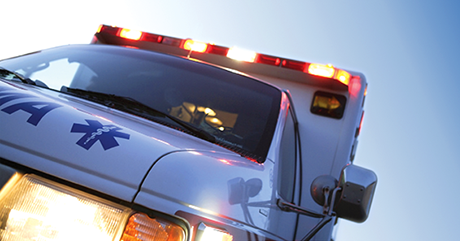Emergency! – Digging Deeper to Define
Bloggers Note- this week our billing office had a discussion with a client to help provide direction on the question of what constitutes an emergency and the documenting of the use of “lights and sirens”. The discussion is common. Just about two years ago, we added a blog post that addressed this very subject, so we thought it would be a good idea to resurrect that post and remind everyone of the rules. We hope you enjoy the content.
Lights and Sirens Myth
This billing office is often questioned about what constitutes an emergency for the purposes of billing and collecting payment.
There’s a myth in EMS that any ambulance incident that necessitates the use of “lights and sirens” is an emergency. It’s not the case.

We look to Chapter 10 of the Medicare Benefit Policy Manual as published by the Center for Medicare and Medicaid Services (CMS) for the definition most widely used. Surprise! There isn’t a mention of lights and sirens anywhere in the definition.
We need to know…
Whether you’re an EMS field provider, an EMS administrator or both it is important that you know and understand the definition of what constitutes an emergency in the ambulance billing world. We argue that many of our street-level providers are never adequately schooled on the rules, yet we expect them to provide pinpoint documentation regarding their emergency scenario when they have no clue on how to tell the billing office what it is they need to tell us in order to define the scenario as emergency or non-emergency.
In the world of the street provider, you turn on the light, hit the siren and get a move on– that’s an emergency.
Not so for billing later.
The Definition
CMS defines an ambulance “emergency” as…
An emergency response is one that, at the time the ambulance provider or supplier is called, it responds immediately. An immediate response is one in which the ambulance provider/supplier begins as quickly as possible to take the steps necessary to respond to the call.
In explaining the application of the definition, CMS further elaborates…
The determination to respond emergently with a BLS or ALS ambulance must be in accord with the local 911 or equivalent service dispatch protocol. If the call came in directly to the ambulance provider/supplier, then the provider’s/supplier’s dispatch protocol must meet, at a minimum, the standards of the dispatch protocol of the local 911 or equivalent service.
Again…specifically noting for emphasis…not a single mention of lights and sirens.
Let’s pick it apart…
Looking at the definitions and application instructions above, what is it that is required to be in the Patient Care Report documentation in order to affirm to the payer that the trip can be billed as an emergency?
First, make sure that everyone is documenting how the dispatch was received. Most likely it has been received via the 9-1-1 public service access point (PSAP). You’ll find above that the rules do allow for what we all refer to as a “direct call” when the office phone rings at the station as opposed to a 911 center but it should be stated in the PCR that the call was emergent or life threatening in nature. For the regular phone to ring with an emergency requires that the ambulance office where the phone is answered follows the same protocols as the nearest 911 center which necessitates some set-up behind the scenes (another blog, another time).
Second, we must be sure to educate the provider staff about documenting the response. Notice the rule spells out that the ambulance crew “…must begin as quickly as possible to take the steps necessary to respond to the call.” A standard alert-to-response time frame, such as in a volunteer-staffed ambulance scenario or where there are complicating factors such as inclement weather, etc., simply needs to be explained in the written narrative.
Documenting the means of dispatch (911 or equivalent) and documenting the “immediate” response are the two big ticket items that must be clearly spelled out in the Patient Care Report to enable your billing office to properly bill the EMS scenario out as an ALS or BLS emergency.
Suggestion
Finally, if possible it never hurts to include documented verification from the 911 center. Many systems are now providing Computer Aided Dispatch (CAD) recaps which can either be electronically scanned and attached into an ePCR system or appended to the written documentation to be passed-on to the billing office. Having this information available is proof-positive of the nature of dispatch and even backs-up the response times of the scenario.